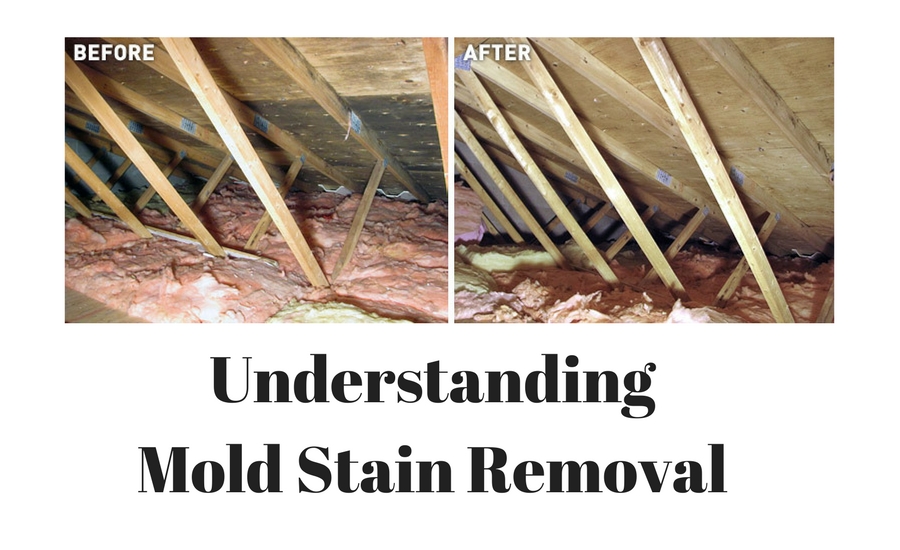Understanding Mold Stain Removal
Article written by Jeff Heyd
There has been a significant increase in new mold stain remover products in the restoration/remediation market lately. Part of the reason for that is an increasing awareness of liquid-based mold removal methods. And a growing understanding of the relationship between mold staining and property value perceptions. Many of the new mold stain remover products are just re-marketed old chemistry. Some are improvements of older formulations, and a few are unique new technologies. So what’s the big deal about removing mold stains? How does one determine which product type to use?
It is important to always remember that removing or improving the appearance of mold staining is NOT mold remediation. Real mold remediation must always result in the physical removal of mold contaminants. That being said, mold stain removal is an important part of mitigating the damage caused by mold growth for two primary reasons:
1. Visible mold staining can reduce the value of a property.
2. Visible mold staining can cause negative impressions and apprehension about mold remediation results.
Until recently the only widely known way to remove mold staining was to remove a layer of the surface of wood materials via sanding or media blasting… or by covering the stained surface with an opaque coating. New chemical technologies now make it possible in most cases to remove or improve the mold staining without damaging or covering up the structural materials. So which mold stain remover product should you choose?
First, it’s useful to understand what “mold staining” really is. Without getting too technical, it is the visible result of fungal metabolic processes. In other words, it is visible staining on surfaces due to mold digestion and all the related chemical things that go on when mold does its thing. When you consider that there are thousands of types of mold species. Digesting hundreds of different potential food sources in hundreds of types of environmental conditions. On hundreds of different types of surfaces… you might get the idea that no two mold staining situations are alike.
Mold Stain Removal in Your Home
Because of the nature of mold staining, it is difficult to predict the results of mold stain removal. For example, there are cases where the mold has been digesting the surface of the wood in an attic for many years. In those cases, there may be no way to make the surfaces look new again without removing a significant layer of the surface. There are also situations where the mold has trapped soot or some type of inorganic pollutants. That causes stains that do not react with the particular type of chemistry in the product you are using.
With that in mind, the difficulty of removing mold stains falls on a spectrum of difficulty ranging in mold stains that can be just wiped off to those that are impossible to remove. Take a look at the graph below:

How mold staining responds to any given treatment will depend upon where on this “Spectrum-of-Difficulty” the mold stain lies and the strength of your chosen treatment method. Every mold job you encounter will fall on a different level of difficulty on this chart. If the mold staining on a particular job is moderate, then perhaps an enzyme or hydrogen peroxide product would be an appropriate choice. If the mold staining falls farther in the difficult range, your choices will be more limited… or you may have to use a sander or media-blaster to get the results you need.
Understanding how mold stains work, combined with good, old-fashioned experience in the field. Will help you to eventually increase your ability to predict how the mold stains might respond and which product and method to choose for optimal results. Remember, each product and method has its own set of pros and cons. Some powerful stain removal products work well and work quickly, …but are quite hazardous to use, are corrosive, and carry a lot of liability. Other types of products might be much safer and have less liability, but be a bit slower to show complete results.
Knowing which product is capable of what, understanding the downsides and risks. And really dialing in how to correctly use each one will take some time and practice, but it’s what true professionals do. Putting mold stain removers to work in the field can greatly improve your results and profitability. Just as importantly, it will help to retain the value of the properties you remediate and provide more customer satisfaction. Take the time to understand mold stain remover technology and put it to work for you!
| EPA Registration: A MUST for Flood Cleanup |

